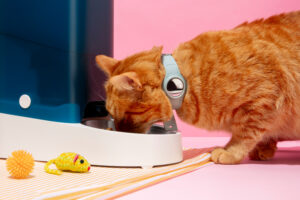How to Clean Your Cat’s Teeth

Cleaning your cat’s teeth is an essential part of maintaining their overall health. Dental disease is common in cats and can lead to pain, infections, and other health issues if not addressed. Here’s a comprehensive guide on how to clean your cat’s teeth effectively and safely.
How to Clean Your Cat’s Teeth
1. Gather Your Supplies
Before you start, make sure you have the following items:
- Cat-Specific Toothpaste: Never use human toothpaste, as it can be toxic to cats. Look for flavored options (like poultry or fish) that your cat will enjoy.
- Toothbrush: Use a toothbrush designed for cats or a finger brush, which can be easier to maneuver in your cat’s mouth.
- Dental Wipes: These can be used as an alternative to brushing if your cat is particularly resistant.
- Treats: Look for dental treats that can help reduce plaque buildup between brushings.
2. Get Your Cat Comfortable
- Choose the Right Time: Pick a time when your cat is relaxed and calm, such as after a meal or during a quiet moment.
- Create a Comfortable Environment: Sit in a quiet area with your cat. You may want to hold them on your lap or place them on a flat surface where they feel secure.
- Familiarize Your Cat: Let your cat sniff the toothpaste and toothbrush before you start. You can also let them lick a little toothpaste from your finger to get them used to the flavor.
3. Introduce the Toothbrush Gradually
- Finger Brush First: If your cat is apprehensive, start by using your finger or a finger brush to gently rub their gums and teeth.
- Use Positive Reinforcement: Praise your cat and give them treats during this process to create a positive association with tooth brushing.
4. Brush Your Cat’s Teeth
- Position the Head: Gently hold your cat’s head to keep it steady. You can use one hand to hold the top of their head and the other to hold the toothbrush.
- Brush in Circular Motions: Use small circular motions to brush the outer surfaces of the teeth. Focus on the back teeth where plaque tends to build up.
- Be Gentle: Be gentle and avoid putting too much pressure on their gums. If your cat resists, take breaks and try again later.
- Brush for About 30 Seconds: Aim for brushing for at least 30 seconds to a minute. If your cat allows it, you can gradually increase the time as they get used to the process.
5. Clean the Entire Mouth
- Don’t Forget the Gums: Be sure to brush the gums gently, as this helps remove bacteria that can cause gum disease.
- Focus on Specific Areas: Pay special attention to the areas around the canines and molars, as these are prone to plaque accumulation.
6. Finishing Up
- Rinse the Toothbrush: After brushing, rinse the toothbrush thoroughly.
- Give Rewards: Praise your cat and give them a small treat or playtime after the brushing session to reinforce positive behavior.
7. Frequency of Brushing
- Regular Routine: Ideally, brush your cat’s teeth at least two to three times a week. Daily brushing is even better for optimal dental health.
- Regular Dental Check-ups: Schedule regular veterinary check-ups that include dental examinations and professional cleanings.
8. Alternative Dental Care Options
- Dental Chews: Offer dental treats that help reduce plaque and tartar buildup.
- Water Additives: Some water additives are designed to promote dental health and can be added to your cat’s water bowl.
- Dental Wipes: If brushing is too challenging, use dental wipes specifically designed for cats.
Conclusion
Regular dental care is essential for your cat’s health and well-being. While it may take some time for your cat to get used to the process, patience and positive reinforcement can make tooth brushing a routine part of their care. If you have any concerns about your cat’s dental health or if they have existing dental issues, consult your veterinarian for advice and treatment options.













Post Comment